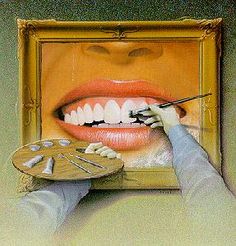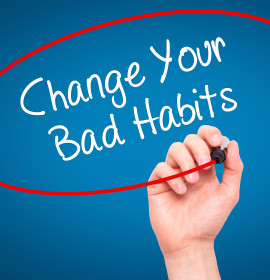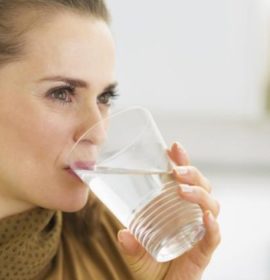
Home Care Dental
Preventive Dentistry
Home care for oral Hygiene (do’s and don’ts) Oral hygiene and care was an important aspect of health for centuries. Some people say that they brush their teeth with mango leaves, some with salt and charcoal powder, and others with neem and other plant sticks.
Why, When ,How and with what to brush the teeth is an ongoing question may be sometimes due to the huge advertising campaigns that knocks your intriguing mind with their endless array of “new and Improved versions” in dental /oral care products endorsed by ultra white toothed celebrities. Do these products help you ward off the dental problems? When to Brush your teeth? Brush your teeth twice Daily but when? The school books say brush in the morning and evening and we get up and go straight to the wash room to brush. Why?
You have brushed your teeth after dinner, before you went to bed, you never had any food or sweets after that then what are you brushing off. There is no food debris in your mouth when you wake up so please BRUSH AFTER YOUR BREAKFAST and go fresh to your work place. Night brushing is extremely important because, if you allow food particles to stay in the night overnight the digestive salivary enzymes with breakdown food into acidic elements and bacteria will grow on these food particles and start dental decay. If you are undergoing orthodontic treatment (braces) make sure that you brush after every meal.
The Indian way of washing your mouth with water after food is better to keep teeth healthy than the westernized use of napkins. How to choose the Toothbrush? The use of mango leaves, plant twigs, toothpowder as our forefathers did is fine, if you can live their lifestyle of eating raw vegetables, fruits, sugarcane and other fibrous food (which cleans their tooth while eating them) instead of refined & cooked food .
Use a soft bristled brush with a small head and a triangular end (as shown in picture) Triangular head helps to reach the back teeth while brushing. Ends of the bristles should be round to reduce the gingival injury. Flexible brushes are good as they reduce the pressure on the teeth. Elderly and Children may opt for electrically charged rotary brushes that can clean effectively with limited hand dexterity.
The Choice of tooth paste. So many different flavors, colors, and compositions of toothpaste s are available. What is the priority? To reduce caries you need to have fluoridated toothpaste (may not be used in Andhra Pradesh and other places where there is a very high content of fluorides in the water they drink). To reduce friction it should be foaming and should have pleasant taste. Most foaming fluoridated toothpastes have approximately 1000 ppm of fluoride. For Children a concentration of 500 ppm is advocated to reduce the side effects of habitual swallowing of fluoridated tooth paste.
Gels and powders may be avoided as they are more abrasive than pastes. Desensitising tooth pastes may used for cases with sensitivity to cold and hot beverages. Pastes Like Vantej and Colgate Sensitive Prorelief should be applied on affected for 2 or 3 minutes before brushing to be effective. Regular use of desensitizing paste may impart a yellow shade to teeth.
Mouth washes Different types of mouth washes are available in the market. Medicated chlorhexidine mouthwashes and alcohol based mouth washes are available for specific treatments of the gums. Staining foods and beverages should be avoided during use of Chlorhexidine mouthwashes. Prolonged usage of medicated mouthwashes may reduce the taste sensitivity.Fluoridated mouth washes are beneficial in caries active mouth (prone to dental decay) and in debilitated (medically compromised bedridden) patients . Desensitising mouth washes are also available to improve the effectiveness of the pastes. All mouth washes should be used undiluted to get the desired effects.
Hot saline (warm salt water) gargle is advisable in cases with oral ulcers or during eruption of teeth to reduce the inflammation. Other dental aids Dental floss should be used for removing any food particles between teeth rather than a toothpick. Interdental brushes may be used to clean the larger gaps if any. Water picks are high pressure water jets that can be used for cleaning teeth at home. These are beneficial in tough cleaning areas like crowded teeth or after periodontal therapy. Ozonated water jets are also available for dental hygiene.
How to brush? Have you seen people walking around with the toothbrush in their mouth. If you brush too vigourously with all your might or brush for 15 to 20 minutes you are abrading the enamel of the teeth. Press a pea sized amount of tooth pasted into the bristles. Brush your teeth for 2-3 minutes. Go around all the teeth from one corner to the other. Give special attention to the back side of the lower front teeth and the last molars. Wash thoroughly and use your brush to clean the tongue. Remove all removable dentures, elastics, appliances before brushing. It is good to use your finger to massage the gums after brushing. Never brush your teeth in a to and fro motion(the teeth will wear off at the margin joining the gums) but brush it up and down or a rotating motion as the teeth will wear off at the margin joining the gums by the latter technique. Change tooth brush after 6 months or after bristles start to fan out. If there is any gum bleeding consult your dentist. Keep your teeth clean and smile confidently.
Leave a comment





